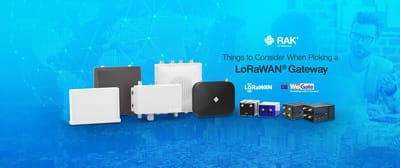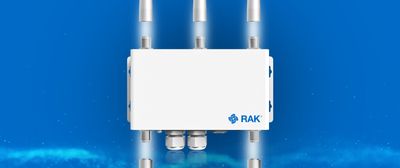What is the Best Antenna Type for Water Metering and Why Do FPC Antennas Prevail
In the domain of smart utilities, particularly water metering, the selection of an appropriate antenna type is pivotal for ensuring efficient, reliable, and long-range communication. Among various antenna types, Flexible Printed Circuit (FPC) antennas have emerged as the frontrunner for their superior adaptability and performance in challenging urban environments. This comprehensive analysis delves into the reasons why FPC antennas are the best choice for water metering applications.
Understanding the Unique Challenges of Urban Water Metering
Urban water metering systems face several distinct challenges:
- Space Constraints: Water meters, often squeezed into cramped spaces, require antennas that are not only compact but also efficient in their spatial use.
- Metal Interference: The prevalence of metal in urban infrastructure can severely disrupt antenna performance, necessitating a design that minimizes such interference.
- Long-Range Communication Necessity: In dense urban landscapes, ensuring consistent and reliable data transmission over extended distances is a crucial requirement for effective metering.
Comprehensive Evaluation of Antenna Options for IoT Water Metering
When talking of IoT-enabled water metering, selecting the right antenna is crucial for ensuring optimal communication and data integrity. Here we assess various antenna options – spring, PCB, and FPC – from an IoT perspective, analyzing their suitability for the specific demands of smart water metering systems.
1. Spring Antennas: Traditional but Limited
- Physical Robustness: Spring antennas have been favored for their durability and simplicity. However, in the context of IoT, physical robustness is only part of the equation.
- IoT Limitations: Their susceptibility to interference from metal objects and inconsistency in mass production poses significant challenges. In IoT systems, where data accuracy and reliability are paramount, these inconsistencies can lead to data transmission errors and reduced network integrity.
2. PCB Antennas: A Step Towards Integration
- Integration with Circuitry: PCB antennas represent an advancement in integrating the antenna directly with the device’s circuit board, which aids in reducing production complexity and improving consistency.
- IoT Considerations: While offering better control over antenna characteristics, PCB antennas still face limitations in terms of flexibility and adaptability to the varied environmental conditions typical in water meter installations. For IoT systems, the ability to adapt to diverse installation scenarios is critical for maintaining network coherence and reliability.
3. FPC Antennas: The Ideal IoT Solution
- Design Flexibility and Customization: FPC antennas stand out for their unparalleled flexibility. They can be custom-designed to fit the specific contours and constraints of water meters, ensuring optimal placement for maximum performance.
- IoT Benefits: This flexibility is especially beneficial for IoT applications, where adaptability and efficient use of space are crucial. FPC antennas can be engineered to minimize interference and maximize range, which is vital for maintaining robust and reliable communication across a dispersed network of IoT devices.
4. Comparative Performance in IoT Scenarios
- Signal Strength and Reliability: FPC antennas typically exhibit superior signal strength and reliability compared to spring and PCB antennas. In IoT, strong and reliable signal transmission is essential for ensuring continuous data flow and real-time monitoring capabilities.
- Range and Coverage: The extended range and improved penetration capabilities of FPC antennas make them ideal for urban water metering, where meters are often located in challenging environments. This feature is crucial for IoT applications that require widespread coverage and consistent connectivity.
5. Manufacturing Consistency and Scalability
- Scalability in Production: FPC antennas can be produced with high precision and consistency, which is a significant advantage for large-scale IoT deployments. Uniform performance across thousands of devices is key to maintaining the integrity of an IoT network.
- Reduced Operational and Maintenance Costs: The durability and consistency of FPC antennas also translate to reduced operational and maintenance costs over the long term, an important consideration for sustainable and cost-effective IoT systems.
Why FPC Antennas Outshine Their Counterparts
FPC antennas distinguish themselves as the superior choice for several compelling reasons:
- Design Flexibility: Their inherent flexibility allows for customization to fit the unique spatial requirements of water meters.
- Minimized Metal Interference: FPC antennas can be strategically designed and positioned to significantly reduce the impact of metal interference.
- Enhanced Range and Reliability: In the complex environment of urban settings, FPC antennas have demonstrated exceptional performance, ensuring reliable, long-range communication – a cornerstone for effective water metering.
Real-World Success of FPC Antennas in Urban Water Metering
The practical validation of Flexible Printed Circuit (FPC) antennas in urban water metering is not just theoretical. These antennas have been subjected to rigorous real-world testing, demonstrating outstanding results that solidify their position as the optimal choice. Let’s delve deeper into their real-world performance and the specific factors contributing to their success:
1. Enhanced Signal Penetration in Dense Environments:
- Challenging Urban Scenarios: Urban landscapes are fraught with signal-blocking obstacles like concrete buildings and underground installations. FPC antennas have proven adept at penetrating these barriers, ensuring uninterrupted communication between water meters and network hubs.
- Impact on Data Collection: This enhanced penetration capability translates to more consistent and reliable data collection. In the context of IoT, where real-time data accuracy is paramount, this characteristic is invaluable.
2. Adaptability to Varied Installation Scenarios:
- Diverse Meter Locations: Water meters are located in a multitude of environments, ranging from basements to street-side installations. FPC antennas can be tailored to each unique setting, maximizing their effectiveness regardless of location.
- Operational Efficiency: This adaptability leads to reduced installation and maintenance costs, as the same antenna type can be effectively utilized across diverse settings, streamlining the operational aspect of water metering systems.
3. Resilience Against Environmental Interferences:
- Mitigation of Metal Interference: One of the standout features of FPC antennas is their ability to perform effectively even in the presence of metal, a common interference factor in urban infrastructure.
- Consistent Performance: By maintaining performance integrity in the face of interference, FPC antennas ensure that the water metering system's data integrity and transmission reliability are not compromised.
4. Long-Range Communication Capabilities:
- Extending Reach: Despite the challenging urban conditions, FPC antennas have shown remarkable capabilities in communicating over extended distances, a critical aspect of widespread network coverage.
- Network Scalability: This long-range capability is essential for scaling up smart water meter systems, enabling a single network hub to cover a larger number of meters, thus optimizing network infrastructure.
5. Energy Efficiency and Sustainability:
- Low Power Consumption: FPC antennas contribute to lower energy consumption of water meters, extending battery life and reducing the environmental footprint.
- Sustainable IoT Deployment: In the broader scope of IoT, energy efficiency is a key metric for sustainability. FPC antennas align with this goal, making them a future-forward choice for smart city applications.
Conclusion: A Testament to Technological Innovation
Choosing the right antenna for water metering transcends mere technical decision-making; it's about ensuring the dependability and efficiency of a vital utility service. In the context of IoT water metering, FPC antennas emerge as the superior choice. Their adaptability, consistent performance, and superior communication capabilities align seamlessly with the demands of IoT systems. By ensuring reliable, long-range communication and reducing the likelihood of interference, FPC antennas facilitate the effective and efficient operation of smart water metering systems, making them an indispensable component in the IoT ecosystem.





